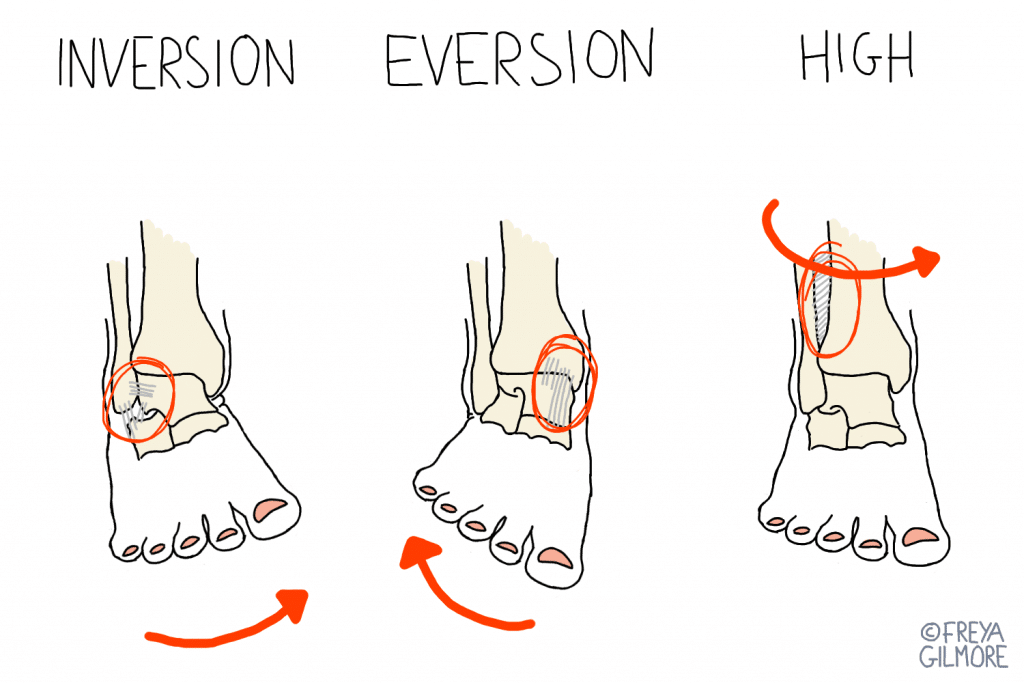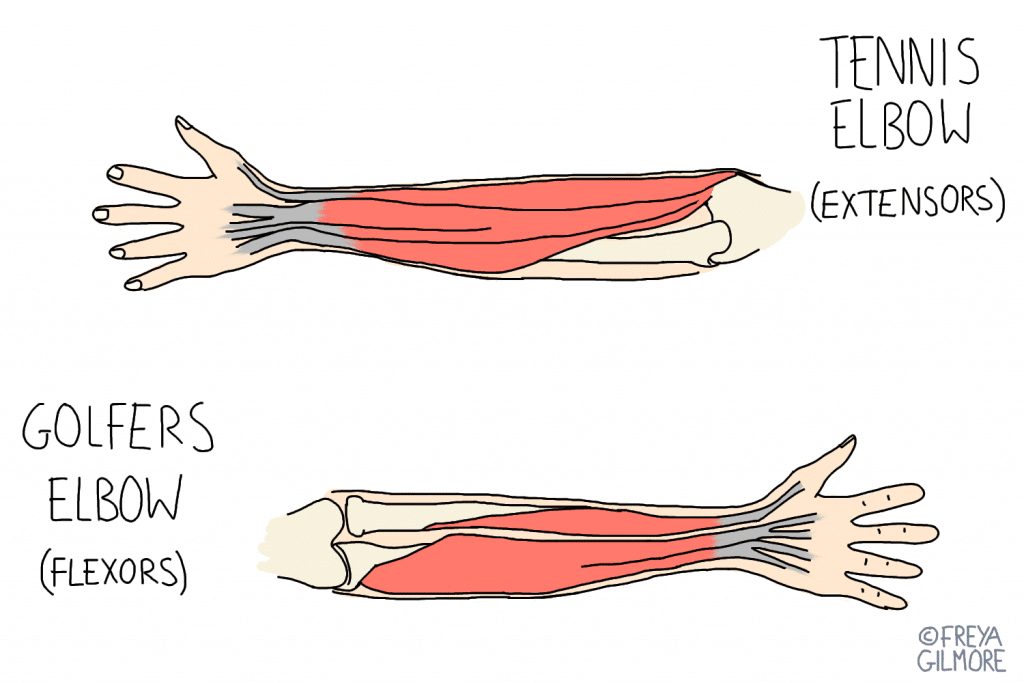

Minor sports injuries are frustrating, especially when they limit your return to exercise. Osteopaths can help you from the early stages of injury to rehabilitation to help you come back more resilient.
Sprains are a very common injury from all kinds of sports. A sprain is an injury to a ligament, whereas a strain is a muscle injury. The former is graded from 1 to 3, with 1 being very minor and 3 being a total rupture of a ligament.
All grades can be accompanied by swelling, tenderness, heat, and redness. Second and third grade sprains show excess movement on examination, ranging from laxity to instability.
Ankle sprains are some of the most common sprains. The three main types types are inversion, eversion, and high ankle sprains. These are all caused by different movements as illustrated below:

The first aid advice for sprains and strains has changed: no longer do you “RICE” a soft tissue injury, you now give it “PEACE and LOVE“! Although the “PEACE” part of the plan is similar to the rest, ice, compress, and elevate of “RICE”, there’s now focus on rehabilitation too.
“LOVE” stands for: Load, Optimism, Vascularisation, Exercise. After an injury like this, it can be hard to work out the best way to return to normal on your own. These new guidelines show the importance of getting the rehab right, and this is somewhere your osteopath can help. Combining work done in the treatment room with exercises to safely re-strengthen the whole area helps with all four elements of “LOVE”.
Cartilage in the shoulder and knee can be susceptible to injury in throwing and twisting sports.
The shoulder is a very mobile ball and socket joint because the socket is so shallow. There is a larger part of cartilage that sits within the socket and extends around the ball of the shoulder slightly called the labrum. In sports that involve a lot of high power, large range shoulder movement, the labrum can be injured.
By a similar mechanism, the menisci of the knee can be injured by twisting through the knee while weight-bearing. This is one sports injury you’ve probably seen in footballers. Each knee has two menisci that both sit on the top of the shin bone: the medial meniscus and the lateral meniscus. These are both roughly C-shaped pieces of cartilage which cushion the joint and distribute weight across the surface of the knee bones.
With both the labrum and the meniscus, injuries can cause immediate pain and delayed swelling. Cartilage has a poor blood supply, so the swelling is initially the body’s way of getting nutrients to the area; but we want to keep this fluid moving to remove the waste products from the joint and bring in more nutrition. Osteopathy can help here.
By keeping the area around the injury at its best condition, your osteopath can help keep that fluid moving. This gives the injury the best environment possible to heal itself. As the injury improves, you may be given more exercises and advice to restrengthen the area and get you back to normal.
Your osteopath will also be monitoring your injury to check the progress is in line with where it should be, and can refer you on for imaging or further intervention as necessary.

Repetitive movements such as those needed for racket sports can sometimes cause inflammation around the muscles in question. One obvious example is epicondylitis:
In both cases, the end of the muscles around the elbow become inflamed.
Your osteopath can easily diagnose epicondylitis and work to ease off the irritated muscles and reduce surrounding inflammation. As with most things, the sooner your injury is addressed, the quicker it can be resolved.
Alongside exercise advice, your osteopath may suggest changes to make with regards to your sporting equipment. For example, a thicker grip on a handle is easier on the forearm muscles than a thinner one.
Avin has a background in sports as an ex-professional rugby player. Book an appointment for your sports injury today.